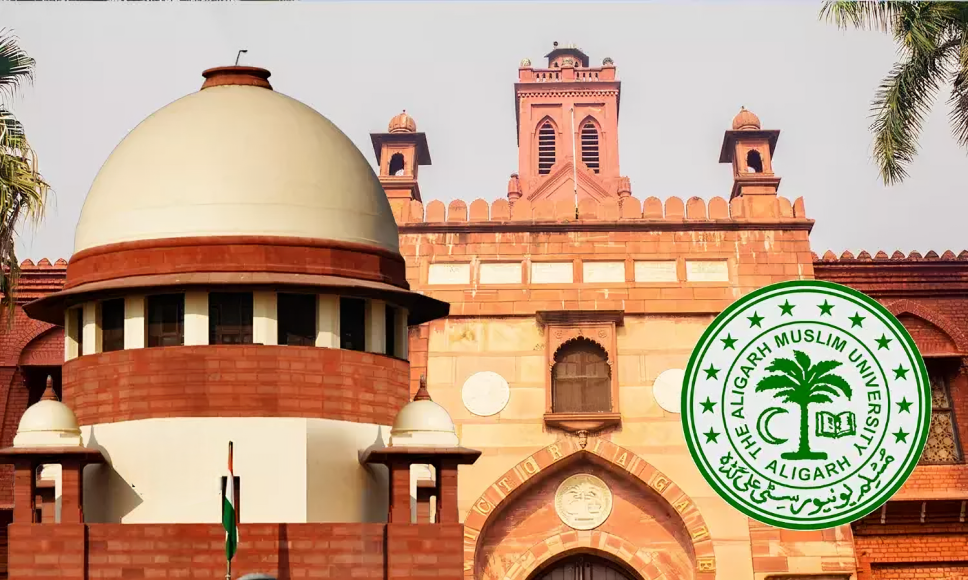Minority Rights and Aligarh Muslim University

The Supreme Court ruled in a 4:3 majority judgment that an educational institution established by a minority community retains its identity even after statutory recognition. This decision, authored by Chief Justice D.Y. Chandrachud, addresses petitions seeking minority status for Aligarh Muslim University (AMU). The ruling underscores that minority character of such institutions is not lost due to their legal recognition through a statute, setting an important precedent for how minority institutions are legally treated in India.
Aligarh Muslim University (AMU) Case:
The 2024 Supreme Court ruling on Aligarh Muslim University (AMU) has generated significant attention, with the Court reaffirming the institution’s status as a minority university despite its central funding. This decision overturned a 1967 verdict, setting the stage for a broader debate on minority rights, state involvement, and the role of public funds in religiously affiliated educational institutions. The case highlights the delicate balance between preserving cultural identities and the need for state control in an increasingly secular and diverse nation. This article delves into the background, legal implications, and the ongoing political and judicial debates surrounding AMU’s minority status.
Background of AMU and Minority Status
- Founding and Purpose: Aligarh Muslim University (AMU) was founded in 1875 by Sir Syed Ahmed Khan with the objective of promoting modern education among Muslims. Originally known as Muhammadan Anglo-Oriental College, it sought to address the educational needs of the Muslim community in British India. Over the years, AMU became a symbol of Muslim intellectual and educational progress.
- Minority Institution Status: AMU has long been considered a minority institution due to its founding purpose of serving the Muslim community. However, its minority status came into question after it was declared a central university in 1920, thereby coming under state control and receiving government funding.
Supreme Court’s 2024 Judgment
- Ruling: In a landmark judgment, the Supreme Court of India in 2024 overturned the 1967 decision, which had denied AMU minority status. The Court ruled that AMU should retain its minority institution status under Article 30 of the Indian Constitution, which guarantees the right of religious and linguistic minorities to establish and administer educational institutions.
- Reasoning: The Court acknowledged that AMU’s founding was based on the need to address the educational needs of Muslims, and this historical foundation was critical in upholding its minority status. The ruling emphasized that AMU’s identity as a Muslim institution, founded for the benefit of a specific community, must be respected, even though it receives government funding.
Minority Rights in India: Key Legal Aspects
- Article 30 of the Indian Constitution: This article provides religious and linguistic minorities the right to establish and manage their educational institutions. The provision was designed to protect the educational and cultural rights of minorities, ensuring that they can maintain their distinct identity within the broader national framework.
- AMU’s Minority Status: The Court’s decision reinforces the interpretation that institutions founded with the specific aim of serving a minority community, such as AMU, are entitled to retain their minority status. Despite being a centrally funded institution, AMU’s mission and history as a Muslim institution ensure its eligibility for such protections.
- State Funding and Autonomy Debate: The ruling raises important questions about the intersection of state funding and religious autonomy. Critics argue that public funding should come with more state control, while others maintain that preserving minority rights through education is essential to safeguarding cultural diversity and preventing the marginalization of minority communities in the educational system.
Concerns and Criticisms
- Religious Identity and National Integration: Some critics also argue that institutions like AMU, which are founded on religious identities, could exacerbate divisions within the educational system, hindering efforts toward a unified national identity. However, supporters counter that AMU’s role in preserving the educational and cultural heritage of the Muslim community is vital for national diversity.
- State Funding Issue: Critics argue that institutions like AMU, which rely on public funding, should not be allowed to claim special privileges associated with minority status. The concern is that such institutions may exploit the system, benefiting from government support while still maintaining a separate identity that could challenge national unity.
Dissenting Opinions
- Dissenting Justices: Justices Surya Kant, Dipankar Datta, and Satish Chandra Sharma dissented from the majority ruling, arguing that AMU’s dependence on government funding should disqualify it from holding minority status. They posited that central government control over the university’s finances and administration should necessitate a reconsideration of its special privileges as a minority institution.
- Implications of the Dissent: The dissenting opinion underscores a critical debate—whether state-funded institutions should still enjoy the autonomy granted to minority institutions. It highlights the potential conflict between maintaining the rights of religious minorities and ensuring equitable control and regulation by the state.
Political and Legal Implications
- Political Debate: The ruling has ignited political debates over the proper role of religious or community-based institutions in India’s secular education system. The question of whether minority institutions should receive state support while retaining autonomy continues to spark discussions about the balance between community rights and national integration.
- Legal Impact: The judgment opens the door for other institutions with religious foundations to assert minority status, even if they are publicly funded. This has significant implications for secularism in India and may lead to debates about how public resources should be allocated to religiously affiliated institutions.
Conclusion:
In summary, the Supreme Court’s 2024 ruling on AMU reflects the complexities of balancing religious autonomy with state involvement in public institutions. The judgment has broader implications for the legal framework surrounding minority rights and public funding in India, and it highlights the need for continued discourse on how best to ensure inclusive, equitable education in a diverse society.
Practice Essay:
“Aligarh Muslim University and the Debate Over Minority Rights: A Legal and Political Analysis”